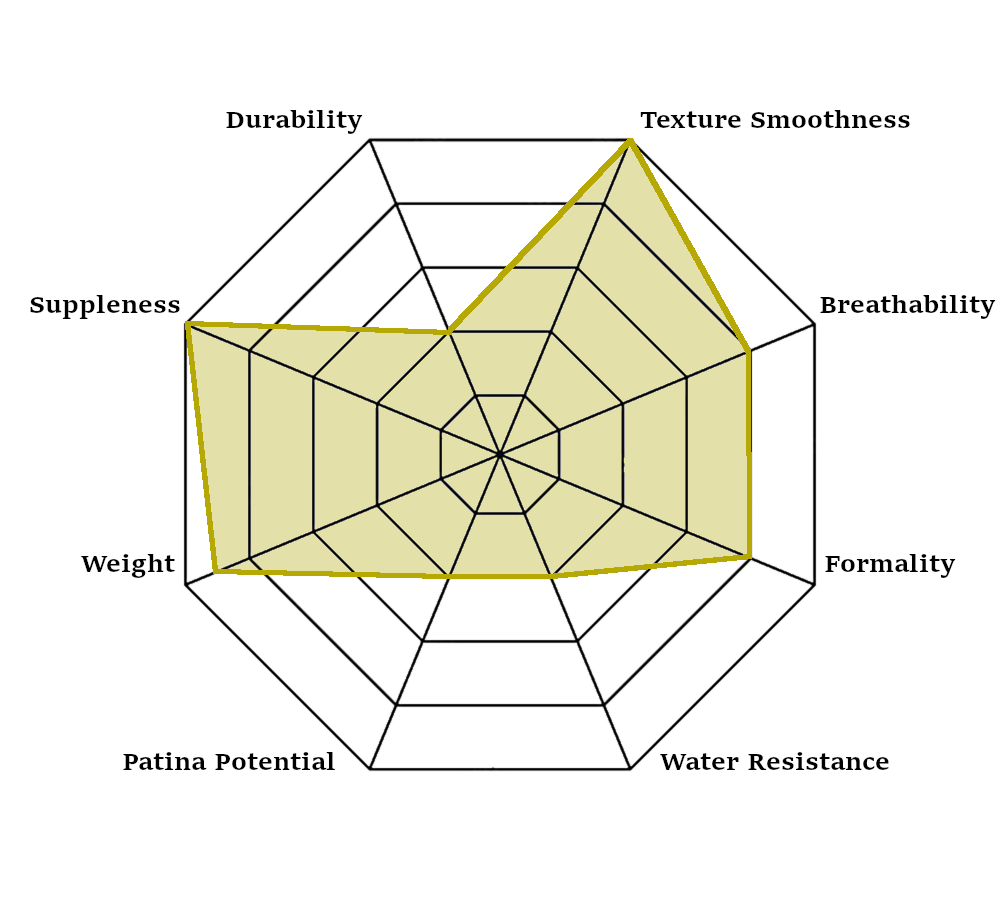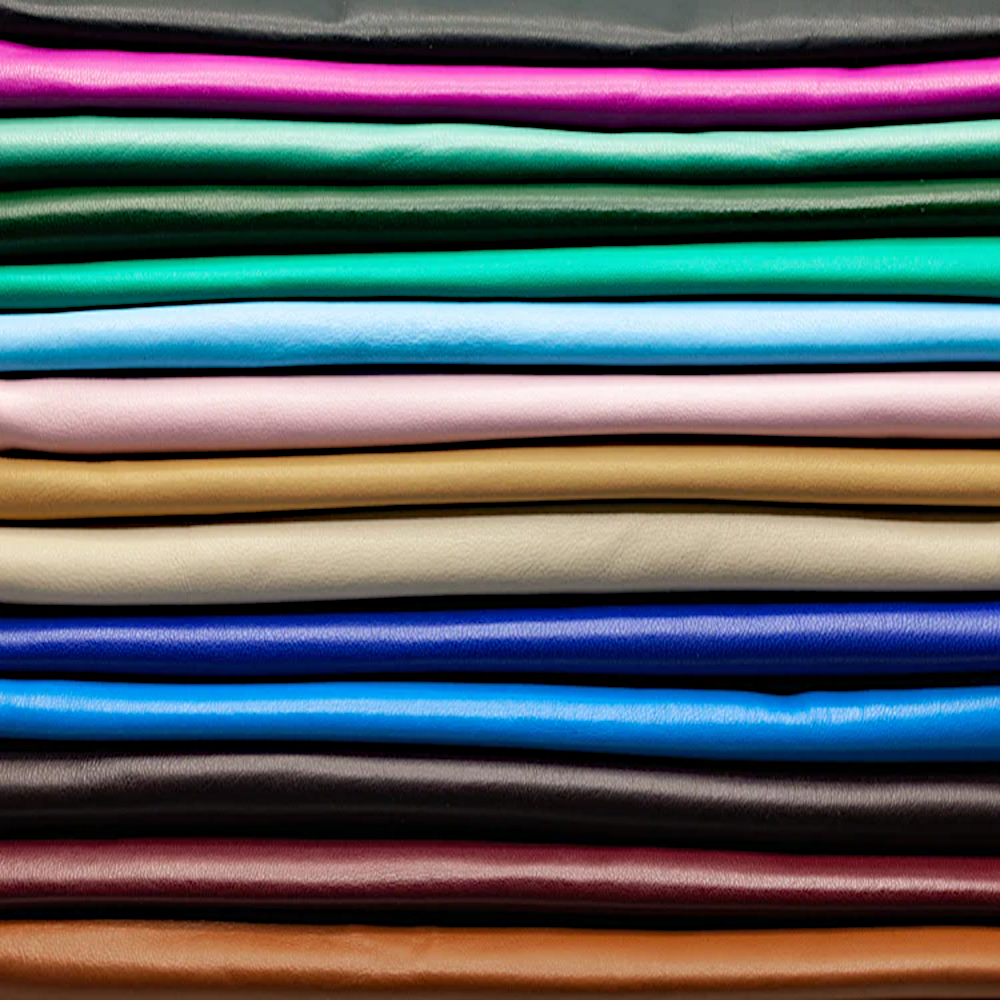
Lambskin
Lambskin leather comes from the hides of young sheep and is renowned for its exceptionally soft, fine-grained, and lightweight nature. Its inherent delicacy and buttery feel make it a luxurious choice, distinct from the more rugged character of cowhide.
Lambskin's standout characteristic is its supreme suppleness (10/10) and very smooth texture (10/10). It's also extremely lightweight (Weight 9/10), contributing to its comfort and excellent breathability for leather (8/10). However, this delicacy means lower durability (4/10) and often lower natural water resistance (4/10) unless treated. Its luxurious feel lends itself to higher formality (8/10), though its patina potential (4/10) differs from traditional full-grain aging.
Due to its softness and light weight, Lambskin is favored for high-end bespoke fashion garments where comfort and a luxurious feel are key. It's ideal for supple jackets (like bombers or blazers), gloves, elegant trousers or skirts, and dressier items, though it requires more careful handling than tougher leathers.
Leather Characteristics Legend
Durability: Measures the leather's resistance to physical damage like scratches, scuffs, and tears. A higher score indicates a tougher, more wear-resistant hide suitable for high-wear garments.
Suppleness: Refers to the leather's softness, flexibility, and ease of movement. A higher score means a softer, more pliable leather that requires less breaking-in and often feels more comfortable initially.
Weight: Indicates the relative thickness and density of the leather. A higher score suggests a lighter, thinner leather (like lambskin), often preferred for less structured items or warmer weather. A lower score indicates a heavier, thicker hide, providing more structure and warmth.
Patina Potential: Rates the leather's tendency to develop a desirable, characterful appearance (patina) over time with use and exposure. A higher score signifies leathers (like full-grain) that age beautifully, developing depth in color and sheen.
Water Resistance: Measures the leather's natural or enhanced ability to repel water. A higher score indicates better protection against moisture, often influenced by the tanning process and applied finishes.
Formality: Assesses the leather's suitability for formal versus casual attire. Higher scores are associated with smooth, sleek leathers often used in dressier jackets or accessories. Lower scores lean towards more rugged or textured leathers common in casual wear.
Breathability: Gauges the leather's ability to allow air and moisture vapor (perspiration) to pass through. Higher scores mean better ventilation, although leather is generally less breathable than most fabrics.
Texture Smoothness: Describes the tactile and visual fineness of the leather's surface. A higher score indicates a very smooth, fine-grained surface. Lower scores represent a more pronounced grain, pebbled texture, or a napped surface like suede or nubuck.







